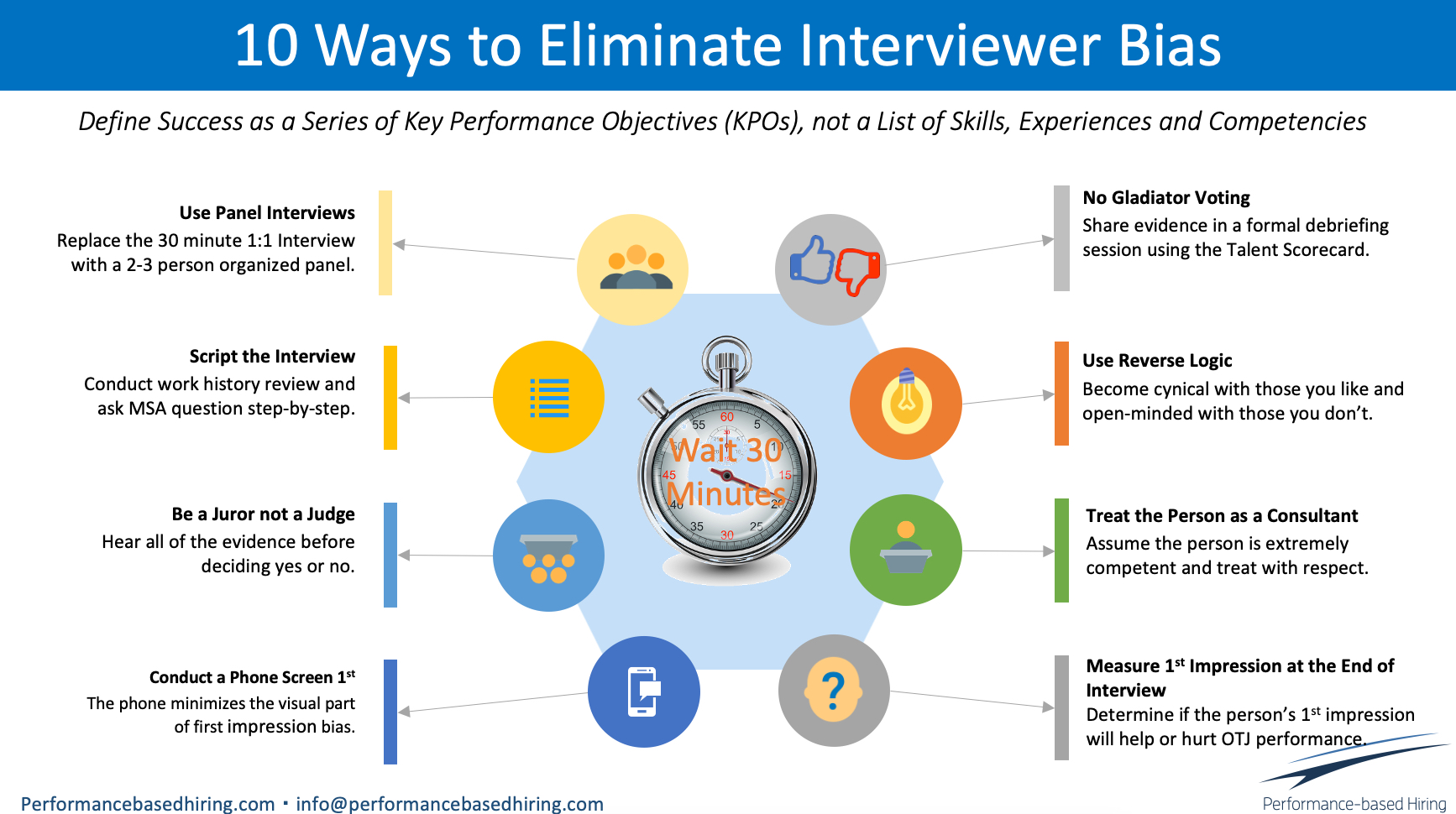Interviewer bias is more than skin deep. Most hiring managers assume they’re good interviewers by hiring people who are most like themselves or who are just like strong performers they’ve known, hired or managed in the past. In fact, they prefer to rehire or refer these people even if they have a few flaws. This is perfectly understandable since there is less risk with someone who is known versus a complete stranger. But it’s a totally biased approach.
If you’re a job seeker, this complimentary self-paced lesson on how to ask and answer questions will help you bridge the preference gap between strangers and acquaintances. This is the same prep course I gave to all my candidates when I was a full-time recruiter to ensure they were assessed on their ability to do the work, not their first impression or presentation skills.

Since bias in any form makes it difficult to assess strangers exactly like acquaintances, we developed a number of other techniques that helped level the playing field, avoid hiring mistakes and increase assessment accuracy. Here are the ones that worked the best and made it onto our Performance-based Hiring All Star interviewing tips list.
10 Critical Steps for Minimizing the Impact of Interviewer Bias
- A true job description is a list of things people need to do, not a list of things they need to have. Defining work as a series of performance objectives has the bigger benefit of opening up the talent pool to more diverse candidates who have done comparable work but who have a different mix of skills and experience than listed on the typical job description. Here’s the legal justification for writing job descriptions this way.
- One way to overcome first impression bias is to force yourself to wait at least 30 minutes before making any yes or no decision. This will be easier if you begin each interview by asking all candidates the same questions whether your initial reaction is positive or negative.
- People tend to relax when they meet a candidate they instantly like and get uptight when this instant reaction is negative. Based on this reaction and without thinking, they seek out positive confirming facts for people they like and negative facts for people they don’t like. You can neutralize this natural tendency by doing just the opposite.
- If first impressions are important for job success, assess them at the end of the interview when you’re not affected by them. Then objectively determine if the person’s first impression will help or hinder on-the-job success.
- The less personal nature of a phone screen naturally reduces bias by eliminating visual clues and focusing on general fit and the person’s track record of growth and performance. By establishing this initial connection with the candidate based on his or her past performance, the candidate’s onsite first impression – strong or weak – becomes less important.
- It’s essential to eliminate yes/no gladiator voting where the person with the biggest thumb wins. Instead require interviewers to provide evidence of competency and motivation to do the work required using a formal scorecard in which all of the interviewers share their evidence.
- As long as the interview is semi-scripted and the interviewers on the panel are assigned roles, it’s difficult for bias to overwhelm the process.
- We initially give someone who is a subject matter expert or a highly regarded consultant the benefit of the doubt. If you give every candidate the same courtesy – whether you instantly like them or not – the truth will be evident by the end of the interview.
- The judge’s instructions to the jurors are always the same: Hear all the evidence before reaching a conclusion. Every interviewer should take the same advice.
- Football coaches script the first 20 plays of every game. By using pre-scripted questions – and giving them to the candidate ahead of time – you reduce the chance of going off-script due to the interviewer’s emotional reaction to the candidate.
Bias in all its forms prevents seeing and hiring the strongest and most diverse talent possible. This negative impact can be minimized when these steps become an integral part of your company’s interviewing process. As a result, you’ll not only see the strongest and most diverse talent possible, but you also ensure each person is objectively and accurately assessed. And that’s important whether the person is a stranger or an acquaintance.


